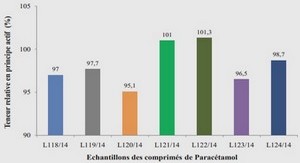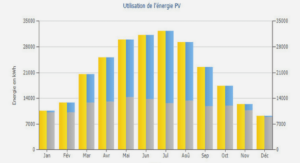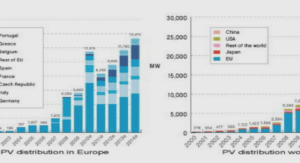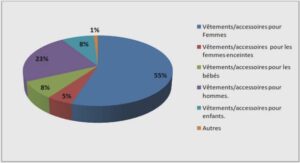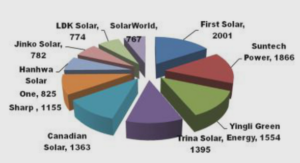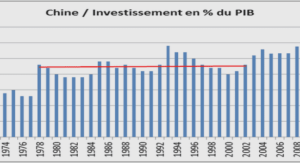Télécharger le fichier original (Mémoire de fin d’études)
EXPERIMENTAL METHODS AND RAW DATA
The tips were dipped in a container drilled in an aluminum or copper sample holder filled with the liquid under study or in a droplet supported by a silicon substrate, both with diameter 5 mm and depth 1 mm.We used a large series of liquids including alkanes, long-chain alcohols, glycols, silicon oils, and ionic liquids. These liquids were chosen to cover a large range of viscosities (from 1
to 1000 mPa s), but they also differ by their surface tension and consequently by the contact angle on the fibers. The chemical nature of the liquid may also come into play, in particular for ionic liquids which lead to strong structuration at solid interfaces [35]. The relevant parameters (volumic mass ρ and viscosity η) of the liquids used are listed in the Supplemental Material [36]. The experiments were performed by using three complementary AFM setups operated in two different modes with micro- and nanosized probes
Frequency-modulation FM AFM measurements
The first series of measurements were performed on a PicoForce AFM (Bruker) operated in the FM AFM mode using a phase-locked loop device (HF2PLL, Zurich Instruments). In this mode, the cantilever oscillates at one of its resonance frequencies (fundamental mode f0 or second mode f1) and the frequency shift f compared to the oscillation in air is monitored. A proportionalintegral- differential closed loop was used to modulate the excitation signal Aex (in volts) sent to the piezoelectric element in order to maintain the amplitude of oscillation of the tip constant. The monitoring of the Aex signal gives access to the dissipation of the system. The advantage of the FM AFM mode compared to the standard amplitude modulation (AM AFM) mode is that it allows measuring independently the conservative and dissipative parts of the interaction while maintaining
the oscillation amplitude constant. We used two types of AFM tips terminated by a nanocylinder with diameter below 60 nm. These tips are made by focused ion beam milling of a silicon tip (CDP55 by Team Nanotec, Germany) or by growth of an Ag2Ga nanoneedle at the tip extremity (Nauga Needles, USA). Both types of
044104-3 JULIEN DUPR´E DE BAUBIGNY et al.
FIG. 2. (a) Frequency shift and (b) friction coefficient β as a function of the immersion depth h for a series of four ionic liquids with viscosities of 36.5, 110, 200, and 500 mPa s from IL2_2 to IL2_10. The inset shows a SEM image of the tip used with a diameter of 55 nm and length 680 nm; the scale bar is 200 nm.
tips were mounted on cantilevers with a static spring constant of the order of 2 N/m, soft enough to perform static deflection measurements while being adapted for dynamic AFM studies. Quality factors Q were of the order of 200–300. Measurements were performed both on the fundamental
mode with a resonance frequency of the order of f0 ∼ 70 kHz and on the second mode with a resonance frequency f1 = 6.25f0 ∼ 440 kHz. The associated spring constants, measured using the
thermal noise spectrum, are k0 ∼ 2N/m and k1 = 40 k0 ∼ 80N/m [37]. The results of a typical experiment are plotted in Fig. 2. They are obtained with a silicon tip ended by a nanocylinder with radius 27.5 nm and length 680 nm (see the inset in Fig. 2) oscillating at its resonance frequency (f0 = 72 450 Hz in air) with an amplitude of 7 nm. The tip was dipped in and withdrawn from the liquid bath with a ramp amplitude of 1 μm and a velocity of 2 μm/s. The frequency shift f and friction coefficient β (deduced from Aex as explained below) are reported as a function of the immersion depth h for one series of ionic liquids.
The following three different signals were monitored during this process:
(i) The deflection of the cantilever measures the capillary force Fcap, which gives information about the wetting properties of the nanocylinder. Note that buoyancy forces Fb are negligible in the range of probe sizes used ( Fb Fcap < 10−3). Since in this paper we do not consider the effects of the meniscus close to the contact line, this curve is not shown. Two plateaus are observed when the tip
is dipped in and then withdrawn from the liquid bath, corresponding to the advancing and receding contact angles as already discussed in several papers [38–40]. 044104-4
AFM STUDY OF HYDRODYNAMICS IN BOUNDARY LAYERS . . .
(ii) The frequency shift f compared to the oscillation in air [Fig. 2(a)] exhibits a large positive jump when the meniscus is formed. When the tip is dipped further into the liquid a linear decrease of the resonance frequency is observed with a slope all the stronger that the liquid is viscous. Since the frequency of the cantilever is given by f = 1
2π
kc
mc
, where kc and mc are, respectively, the spring constant and the effective mass of the cantilever, the frequency shift may have two origins: a change of the spring constant k or a change of massmaccording to f
f
= 12
k
kc
− 12
m
mc
The positive jump
of f observed at the meniscus formation can be attributed to the meniscus effective spring constant kmen [41], which depends on the geometrical shape of the meniscus related to the surface tension and the contact angle [39,41], whereas the decrease may be a mass effect due to the liquid around the fiber.
(iii) The normalized excitation Aex−A0 A0 gives the relative change in excitation Aex required to maintain the amplitude constant compared to the situation in air A0 [Fig. 2(b)]. In order to obtain quantitative information, the dissipation is characterized by the friction coefficient β = β0(Aex−A0 A0),
where β0 = kcωQ is the friction coefficient in air far from the surface [42] with ω = 2πf the angular frequency and Q the quality factor of the cantilever. A jump of dissipation in the β(h) curve is observed when the meniscus is formed and a linear increase with the immersion depth h is obtained
when dipping the fiber further into the liquid. Again, this slope increases significantly with the liquid viscosity. The same signals can also be recorded on the very same system using the second mode
of the cantilever of frequency f1 = 455 400 Hz, which allows assessing the influence of excitation rate.
B. High-frequency MEMS AFM measurements
The microelectromechanical resonators used for the high-frequency measurements were designed
and fabricated by Walter and co-workers at IEMN (Lille, France). Details are reported elsewhere [32,33]. The resonating element is a ring anchored by four points located at vibration nodes [Fig. 3(a)]
and is equipped with a sharp pyramidal tip of 5° half angle [Fig. 3(b)]. The MEMS device was integrated in a specifically designed homemade AFM microscope (see Supplemental Material [36] for further details on the setup). The periodic forcing of the resonator and signal acquisition from the microwave detection circuit were performed with a lock-in amplifier including a phase-locked loop (HF2LI-PLL from Zurich Instrument). Since the MEMS AFM was operated in frequency modulation mode, we monitored the same signals, frequency shift f , and excitation amplitude Aex as for the FM AFM described in the previous section.
The results of a typical experiment are plotted in Figs. 3(c) and 3(d). They were obtained with a silicon tip with a pyramidal tip oscillating at its resonance frequency (f0 = 13.1MHz in air) with an amplitude of 1 nm. The quality factor of the oscillator is of the order of 700. The tip was dipped in and withdrawn from the liquid droplet with a ramp amplitude of 3 μm and a velocity of 0.3 μm/s.
The graphs of frequency shift f [Fig. 3(c)] and friction β (deduced from Aex ) [Fig. 3(d)] are reported as a function of the immersion depth h for a series of ethyleneglycols.
At the meniscus formation, a small negative-frequency shift is observed followed by a monotonic decrease of the frequency shift upon further dipping of the tip. This latter point is similar to the negative slope observed by FM AFM. Note that, due to the large value of the resonator spring constant compared to the meniscus spring constant ( kmen kc ∼ 10−7), no positive jump is observed at h = 0. The dissipation signal also follows similar trends as for FM AFM with a jump in dissipation at the contact with liquid and an increase for positive h values. As discussed in the next section the nonlinear behavior can be attributed to the pyramidal shape of the tip.
Table des matières
Résumé
Abstract
Remerciements
Table des Matières
Abréviations
0 Introduction
0.1 Contexte de l’étude
0.2 Structure de la thèse
I Introduction générale aux méthodes expérimentales
1 Le microscope à force atomique
1.1 Principes généraux
1.2 Spectroscopie de force en mode contact
1.3 Limites du mode contact
1.4 Le mode de modulation d’amplitude – AM-AFM
1.5 Le mode de modulation de fréquence – FM-AFM
2 Le mode de modulation de fréquence (ou mode FM)
2.1 Modélisation d’une sonde AFM par un oscillateur harmonique amorti
2.2 Équation du mouvement
2.2.1 Régime transitoire du système libre (F = 0)
2.2.2 Régime permanent en l’absence d’interaction pointe-surface
2.3 Principe de fonctionnement du mode FM
2.4 Pertinence et limites de la modélisation
2.4.1 Cas du système libre (F = 0)
2.4.2 Cas général ((F 6= 0))
2.5 Procédures de calibration
2.5.1 Deection sensitivity
2.5.2 Raideur du micro-levier
2.6 Mise en place des asservissements
2.6.1 Boucle à verrouillage de phase (PLL)
2.6.2 Contrôle automatique de gain
3 Propriétés des liquides
3.1 Sélection de diérentes familles de liquides
3.2 Tension de surface
3.3 Viscosité
3.4 Propriétés des liquides utilisés
II Déformation d’une interface liquide en champ proche
4 Le jump-to-contact
4.1 Instabilités de snap-in et de jump-to-contact
4.2 Le « jump-to-contact » de surfaces liquides
4.3 Cadre théorique
4.3.1 Description générale
4.3.2 Modélisation de la pointe AFM
4.3.3 Interaction pointe-liquide
4.3.4 Interaction liquide-substrat
4.3.5 Équation de Young-Laplace généralisée pour un lm épais
4.4 Comportement à l’équilibre
4.5 Calcul semi-analytique de dmin
4.6 Dynamique de l’interface liquide en interaction avec une pointe oscillante
5 Expériences de spectroscopie de force et de fréquence
5.1 Dispositif expérimental
5.2 Fabrication de sondes de taille variable et mesure du rayon
5.3 Déformation des gouttelettes lors des expériences
5.3.1 Champ de pression exercé par le liquide
5.3.2 Drainage du lm d’air
5.4 Expériences en mode contact
5.4.1 Mesures brutes
5.4.2 Protocole d’analyse
5.4.3 Résultats et discussion
5.5 Expériences en mode FM
5.5.1 Mesures brutes
5.5.2 Modélisation théorique
5.5.3 Eet de la déformation du liquide
5.5.4 Résultats et discussion
5.5.5 Le cas particulier R . 1 m
5.6 Conclusion
III Étude de nanoménisques en champ proche : hydrodynamique et capillarité
6 Étude de nanoménisques par AFM
6.1 La méthode de la bre pendante
6.1.1 Principe général
6.1.2 État de l’art
6.2 Méthode expérimentale
6.2.1 Principe de la mesure
6.2.2 Dispositif expérimental
6.3 Données expérimentales
6.3.1 Déexion moyenne
6.3.1.1 Analyse des signaux de mesure
6.3.1.2 Raideur de l’interface liquide
6.3.2 Décalage de la fréquence de résonance
6.3.3 Signal d’excitation
6.4 Conclusion
7 Hydrodynamique de la couche visqueuse
7.1 Introduction
7.2 Méthode expérimentale
7.3 Courbes de déexion
7.4 Courbes de décalage en fréquence f
7.5 Courbes d’amplitude d’excitation Aex
7.6 Modèle théorique
7.6.1 Prol de vitesse dans le liquide
7.6.2 Contrainte pariétale
7.6.3 Coecients de friction et de masse ajoutée
7.7 Discussion
7.7.1 Construction de courbes maitresses
7.7.2 Analyse des résultats expérimentaux
7.8 Mesures à haute fréquence MEMS-AFM
7.9 Mesures de bruit thermique à l’ENS de Lyon – HR-AFM
7.10 Bilan des mesures
7.11 Extension de la couche visqueuse
7.12 Conclusion
8 Dynamique du ménisque oscillant
8.1 Introduction
8.2 Méthode expérimentale
8.2.1 Fabrication de sondes dédiées
8.2.2 Traitement UV/ozone
8.2.3 Mesures expérimentales
8.2.4 Le modèle de Joanny et de Gennes
8.3 Modèle théorique
8.3.1 Détermination du champ de vitesse
8.3.2 Champ de contrainte à l’intérieur du ménisque
8.3.3 Coecient de friction
8.4 Résultats et discussion
8.5 Conclusion
Conclusion
Publications
